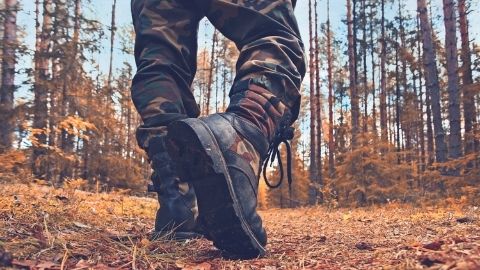Visitor Use Monitoring for the USDA Forest Service

Whether you like to ski, hike, fish, or hunt, chances are that you have done it on lands managed by the Forest Service. There were over 150 million recreational visits to America’s National Forests last year alone. National Forests are literally the foundation of the nation’s $400 billion outdoor recreation industry; they also contribute countless mental and physical health benefits to people who enjoy the outdoors.
Regardless of how you value National Forests, their impact on our lives is undeniable. But how do we estimate the use and value of these places to give leaders and policy-makers a better understanding of why these lands need to be conserved and funded? How do you estimate visitor use across nearly 190-million acres of public land? Through a series of ongoing partnerships with individual forests, the Institute of Outdoor Recreation and Tourism has been doing just that.
By sending research crews out to systematically sample trailheads, ski resorts, campgrounds, and roadside turn-outs, the Institute collects data on outdoor recreation use that the Forest Service then uses to estimate and track numbers of visitors.
 “Our research crews contact visitors on site, and conduct interviews in which they ask about everything from what types of activities they participate in, to how many people are in their group, to how much they spend,” said Chase Lamborn, the Institute’s Assistant Director of Outreach and Education. The data collected by the Institute add to the Forest Service’s National Visitor Use Monitoring program, a program specifically designed to estimate the amount of outdoor recreation that occurs on National Forests. Each forest has been surveyed every five years since the program was initiated in 1995.
“Our research crews contact visitors on site, and conduct interviews in which they ask about everything from what types of activities they participate in, to how many people are in their group, to how much they spend,” said Chase Lamborn, the Institute’s Assistant Director of Outreach and Education. The data collected by the Institute add to the Forest Service’s National Visitor Use Monitoring program, a program specifically designed to estimate the amount of outdoor recreation that occurs on National Forests. Each forest has been surveyed every five years since the program was initiated in 1995.
“We’re excited about the ability to partner with the National Forest’s across the Intermountain West, and to provide them with the technical assistance they need to make more informed management decisions,” said Lamborn.The Institute currently collects visitor use data on over 13 million acres of National Forest land throughout the Intermountain West; this includes the Ashley, Boise, Dixie, Fishlake, Sawtooth, and Uinta-Wasatch-Cache national forests. A quick comparison of the use across these forests (and others within the Intermountain West) shows the value of having a standardized system like the National Visitor Use Monitoring System in place.
If you are interested in finding out more about visitation on a National Forest near you, check out the Forest Service’s interactive reporting tool, or contact the Institute at iort.utahstate@gmail.com.

